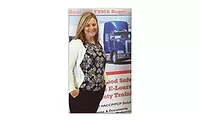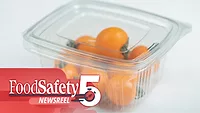Food safety regulations extend to transportation

As of April 6, 2017, the Food Safety Modernization Act (FSMA) Sanitary Transportation of Human and Animal Food rule goes into enforceable compliance. This came about due to foodborne illnesses associated with gaps in programs around how foods are transported via rail and motor vehicles to the next processor or end distribution point. As with all FSMA updates, this critical element in the food supply chain has risk-based considerations.
The rule identifies foods considered vulnerable while in transit to their next destination. Packaged and bulk foods that must be shipped under temperature-controlled conditions to prevent risk of pathogen growth for food safety are one type of food covered under this regulation. This requires appropriate temperature maintenance during shipment. Another product covered in the rule is bulk food materials that are exposed to multi-use bulk vehicles. These associated risks are managed through previous load and wash ticket information to prevent cross-contamination and allergen cross-contact.
Packaged, shelf-stable foods that do not require temperature controls are exempt from the rule. It also does not apply to foods that are managed through other programs.
The rule spells out specific roles and responsibilities of the key players tasked with getting affected food products to their next destination. These are identified as the shipper (person who arranges for transportation of food in the U.S.), loader (person who loads the food onto a motor or railcar for the transportation operation), carrier (person who physically moves the food via rail or motor vehicle for commerce in the U.S.), and receiver (person who receives food in the U.S. after transportation).
The shipper is responsible for including transportation in the hazard analysis to identify any risks associated with shipping. These risks must then be controlled through written procedures communicated to both the loader and carrier. The shipper must inform the carrier in writing about the type of vehicle to be used, temperature requirements (if applicable) and any special instructions needed to maintain the food-safety integrity of the product being transported. Special considerations for bulk vehicles will include the identification of the previous load, wash ticket information, mechanical condition of the vehicle and its equipment, and anything else that is needed to ensure food-safe transport of the bulk food.
The loader controls the food-safety-related conditions of the load during staging and loading the material onto the transport vehicle. This person must follow written standard operating procedures (SOPs) provided by the shipper to ensure that the integrity of the load is maintained during loading. These steps include inspection of vehicle for overall condition prior to loading, temperature controls (if applicable) during the loading process, and pre-cooling of the vehicle when required. If wash tickets and prior load documentation are required for bulk vehicles, the loader may be designated by the shipper to review these documents as evidence that the required sanitary conditions have been met.
The carrier provides the transport vehicle and usually the driver. The responsibility for ensuring vehicle maintenance and sanitary conditions is assigned to the carrier by the shipper through written agreements. The carrier is obligated to ensure that vehicle maintenance and conditions in wash stations are effective and do not create any potential for physical, biological or chemical contamination, including allergen cross-contact. Carriers are responsible for the maintenance and calibration of temperature monitoring devices since they provide the equipment. Additionally, carriers are responsible for documenting the training provided to drivers to ensure they understand the importance of elements specific to their assigned responsibilities. This training would include basic hygiene, sanitation and temperature control.
Looking for quick answers on food safety topics?
Try Ask FSM, our new smart AI search tool.
Ask FSM →
The receiver accepts delivery of the product at the transportation end point. Review of pre-load wash tickets, previous load information and a visual inspection of the inbound load, equipment and temperature records are part of the processes used to determine if the load has been properly maintained. Receiving records document the pertinent information based on the decision to accept the load.
Each entity is responsible to keep required records for 12 months to demonstrate that they have followed the required protocols and procedures to keep the food supply chain safe. Procedures must be kept on site for immediate accessibility. Records supporting the procedures must be available within 24 hours when requested by FDA.
This article was originally posted on www.snackandbakery.com.







